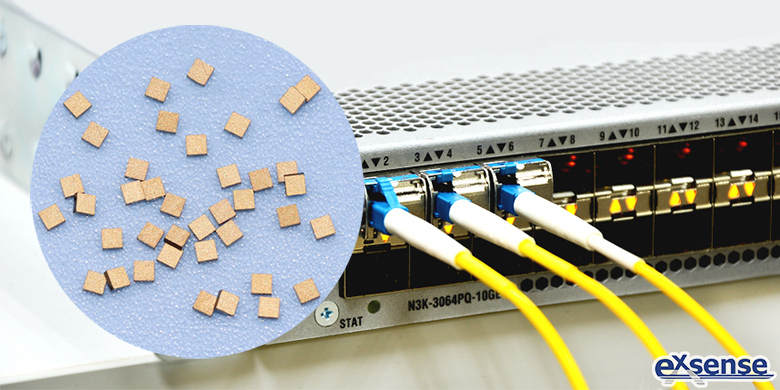
EXSENSE Electronics Technology Co., Ltd. adopts advanced semiconductor processes, combines with independent intellectual property rights, ensures great reliability and high stability of continuous production of gold electrode NTC thermistor chip for optical communication module through high-precision material processing, slicing, packaging and testing equipment imported from Japan and Germany, etc.
Optical communication module is usually encapsulated by TOSA (Transmitter Optical Subassembly), ROSA (Receiver Optical Subassembly), BOSA (Bidirectional Receiver Optical Subassembly) and other components. The internal chips include optical chip, electric chip and so on. Among them, the optical chip realizes the photoelectric conversion, including the laser chip which converts the electric signal into the optical signal and the detector chip which converts the optical signal into the electric signal. The electrical chip processes electrical signals, including digital-analog/analog-digital conversion, signal amplification, clock data recovery and other functions. The optical communication system consists of two parts: optical communication equipment and transmission fiber. Optical fiber is the transmission path of light, and the optical communication module is generally configured in the optical communication equipment, which is the core to complete the photoelectric conversion function, and usually integrates the function of receiving light signal as a whole.
At the transmitter end, the TOSA (Transmitter Optical Subassembly) of the optical communication module includes CDR (Clock Data Recovery), LD (Laser Driver), Laser chip, multiplexer and other components. The transmission principle of the transmitter end is as follows:
First, digital signals complete clock data recovery through CDR to ensure correct data sampling;
Second, LD (Laser Driver) drives and excuses the Laser (Laser Chip) to send out the Laser carrying signal according to the data after clock recovery;
Third, the multiplexer combines multiple optical circuits into one circuit to achieve faster transmission rates and input signals into the optical fiber.
At the receiving end, the ROSA (optical reception submode) of the optical communication module includes the demultiplexer, photoelectric detector, TIA (Trans-Impedance Amplifier), CDR and other components. The transmission principle of the receiving end is as follows:
First, the optical signal in the fiber is divided into multiple channels by a demultiplexer;
Second, photoelectric detector receives the optical signal and converts it into the electrical signal;
Third, the TIA amplifier amplifies the electrical signal for subsequent processing;
Fourth, the CDR completes the clock and data recovery, and is transmitted to the optical communication equipment.
Compared with traditional copper cable communication, optical fiber communication has obvious advantages in bandwidth, speed, anti-interference, anti-corrosion, volume and weight, etc. With the gradual maturity of optical communication technology and the gradual reduction of the overall cost, "Optical access for replacing copper access" has become the main trend of the telecommunications industry in recent years, optical communication has been widely used in the telecommunications market and data center.



